The 24th Japan Media Arts Festival Exhibition of Award-winning Works was held from Thursday (a national holiday), September 23, to Sunday, October 3, 2021, in and around the National Museum of Emerging Science and Innovation (Miraikan). This article reports on the exhibition based on a press preview held at the Miraikan on Wednesday, September 22, the day before the event.
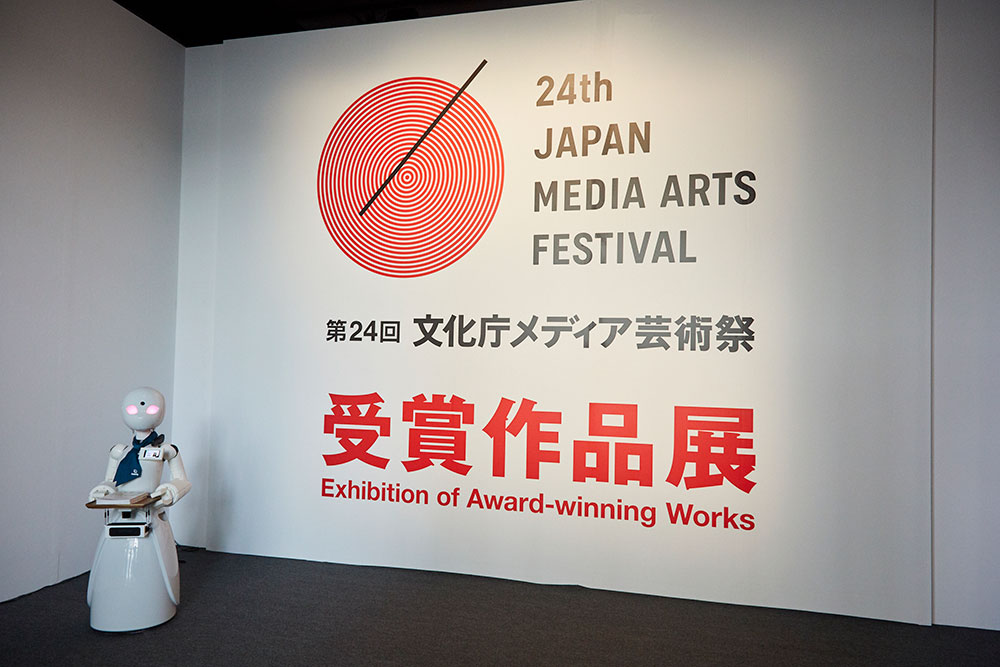 At the preview, visitors were greeted at the entrance of the main venue by an avatar robot of the AVATAR ROBOT CAFE
At the preview, visitors were greeted at the entrance of the main venue by an avatar robot of the AVATAR ROBOT CAFE
Photos: HATAKENAKA Aya (all photos of the exhibition venues)
The exhibition was held in the Special Exhibition Zone, chiefly on the Miraikan’s first floor. In the zone, 37 award-winning works from the Art, Entertainment, Animation, and Manga divisions were displayed. Also, four Special Achievement Award winners were presented in individual booths. Some of the award-winning works and related projects were introduced on the 7th floor. The Festival Platform Award is given to works that take advantage of the characteristics of the Miraikan’s facilities. One winning work was screened on the Geo-Cosmos, a spherical display made using organic electroluminescent (EL) panels. The other winner was screened at Dome Theater Gaia on the 6th floor, images are projected on a dome-shaped screen with a high-intensity RGB laser 4K projector.
Grand Prize in Art Division goes an experiential theater play using VR/AR technology
The first work shown in the Special Exhibition Zone was Prometheus Bound, an experiential theater play by KOIZUMI Meiro, which won the Grand Prize in the Art Division. Taking the Greek tragedy of the same title as its starting point, the work features MUTO Masatane, an ALS patient, as the “contemporary Prometheus,” and uses VR/AR technology to bring a new theatrical experience to the audience.
 A video documenting the performance of Prometheus Bound at Theater Commons ’20 was shown at the venue. At the Panasonic Center Tokyo, the performance was held with the audience wearing head-mounted displays.
A video documenting the performance of Prometheus Bound at Theater Commons ’20 was shown at the venue. At the Panasonic Center Tokyo, the performance was held with the audience wearing head-mounted displays.
In the Art Division, four works received Excellence Awards, including Adrien M & Claire B’s Acqua Alta - Crossing the mirror, a story of a man and a woman and a storm surge phenomenon that unfolds on a pop-up book drawing through a special AR app. Bricolage by Guy BEN-ARY / Nathan THOMPSON / Sebastian DIECKE is a bio art work, in which cardiac muscle cells are grown on silk. Sea, See, She - To you, who is yet to come by See by Your Ears (evala Representative) stimulates the audience’s imagination by sound emitted from a 3D sound system in a dark area. In Stefan TIEFENGRABER’s TH-42PH10EK x 5, five suspended displays move like a pendulum to create sound. The audio signal is converted to an analog video signal, resulting in flickering images on the display.
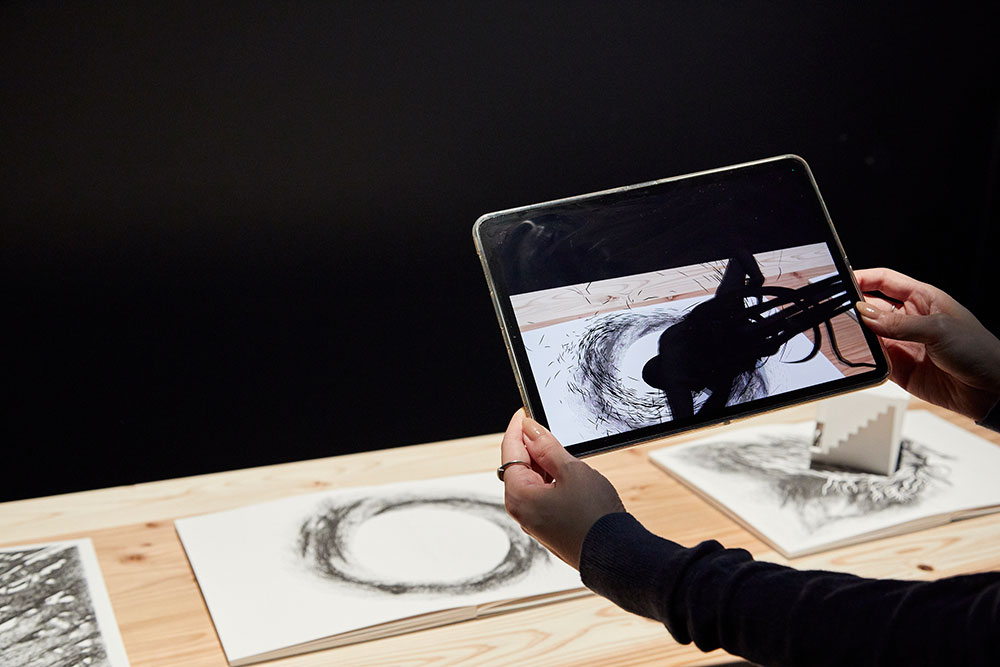 Acqua Alta - Crossing the mirror shows an image when the viewer holds up a tablet device.
Acqua Alta - Crossing the mirror shows an image when the viewer holds up a tablet device.
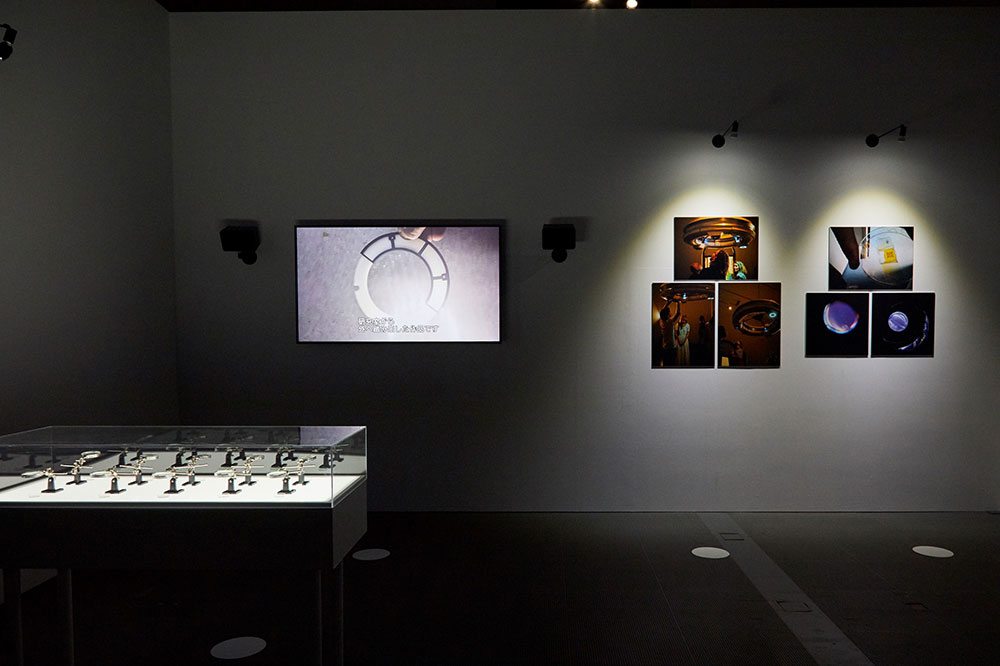 Bricolage was displayed in a petri dish with a silk container for culturing cells, and scenes from past exhibitions were also presented.
Bricolage was displayed in a petri dish with a silk container for culturing cells, and scenes from past exhibitions were also presented.
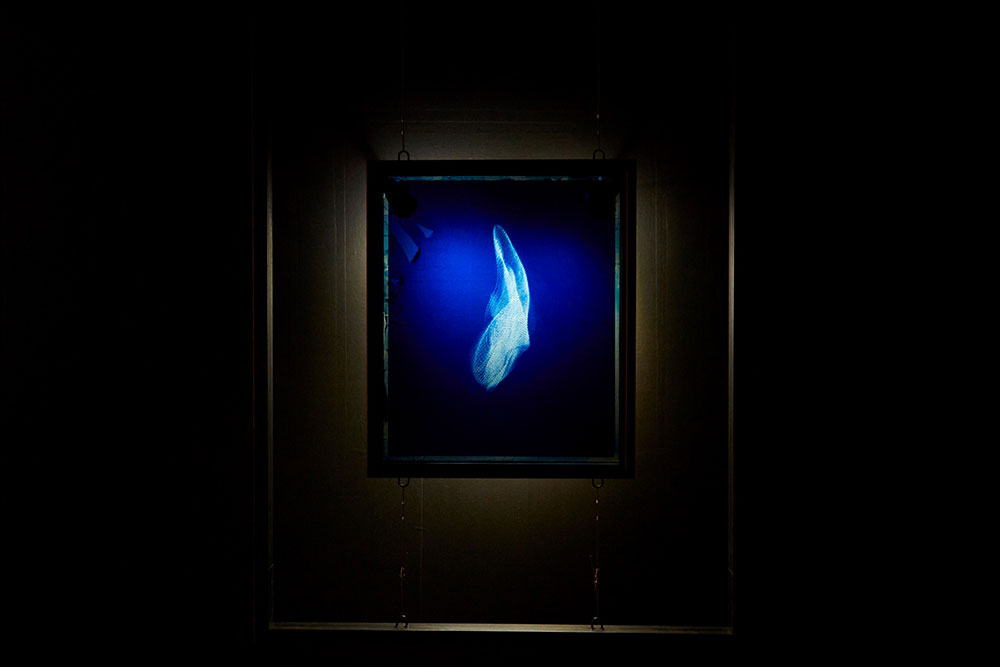 A key visual of Sea, See, She - To you, who is yet to come displayed at the exhibition.
A key visual of Sea, See, She - To you, who is yet to come displayed at the exhibition.
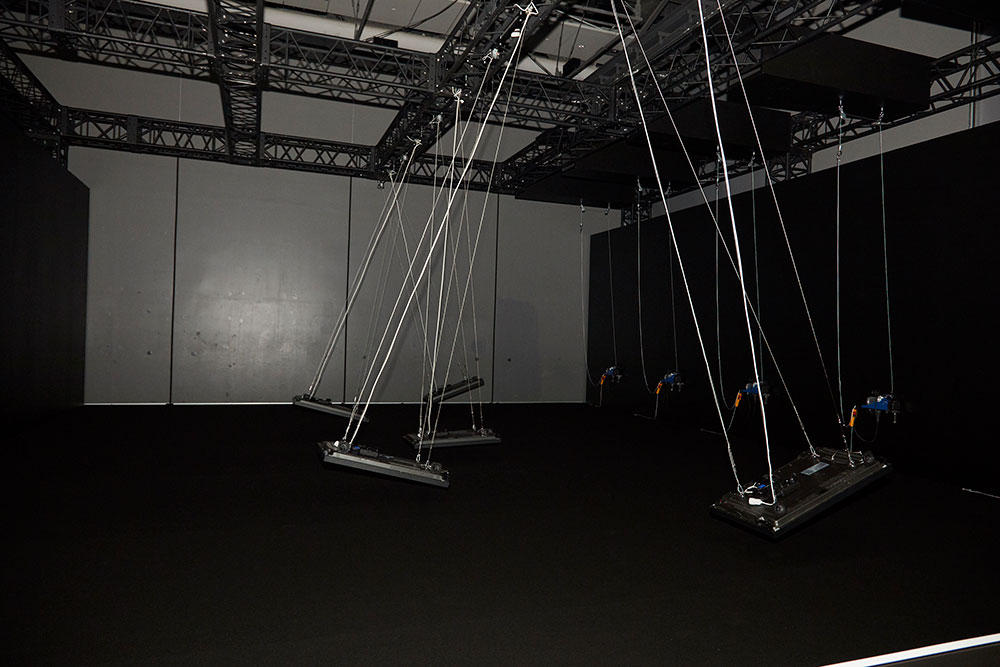 TH-42PH10EK in TH-42PH10EK x 5 indicates the model number of the hanging display.
TH-42PH10EK in TH-42PH10EK x 5 indicates the model number of the hanging display.
Simon WECKERT’s Google Maps Hacks, which won the Social Impact Award, is a media performance in which 99 second-hand smartphones are transported in a handcart to intentionally generate virtual traffic jam on Google Maps.
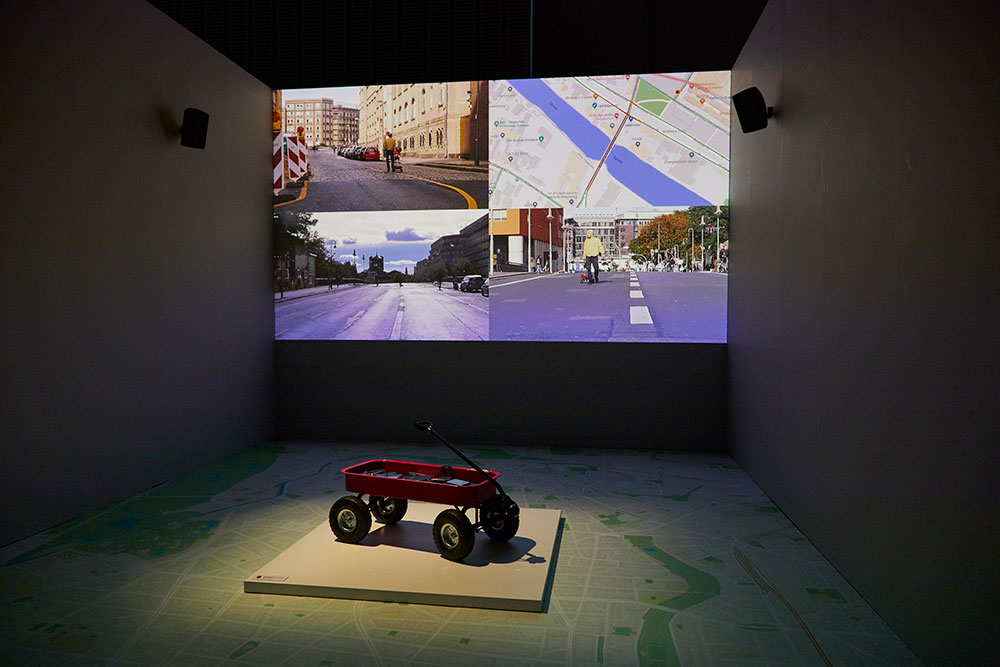 A handcart and a video of it moving along city streets are shown at the exhibition venue.
A handcart and a video of it moving along city streets are shown at the exhibition venue.
The New Face Award went to KOBAYASHI Hayate for The reluming apparatus, in which two robots carrying small projectors move to project images on the surrounding walls; Kaito SAKUMA for Ether - liquid mirror, which produces sound by vibrating a mirror surface with data of the audience’s heartbeat; and KOMIYA Chiku for VOX-AUTOPOIESIS V -Mutual-, which creates a piece of new music with repetitive performances of a musician who sings scores generated based on the musician’s voice.
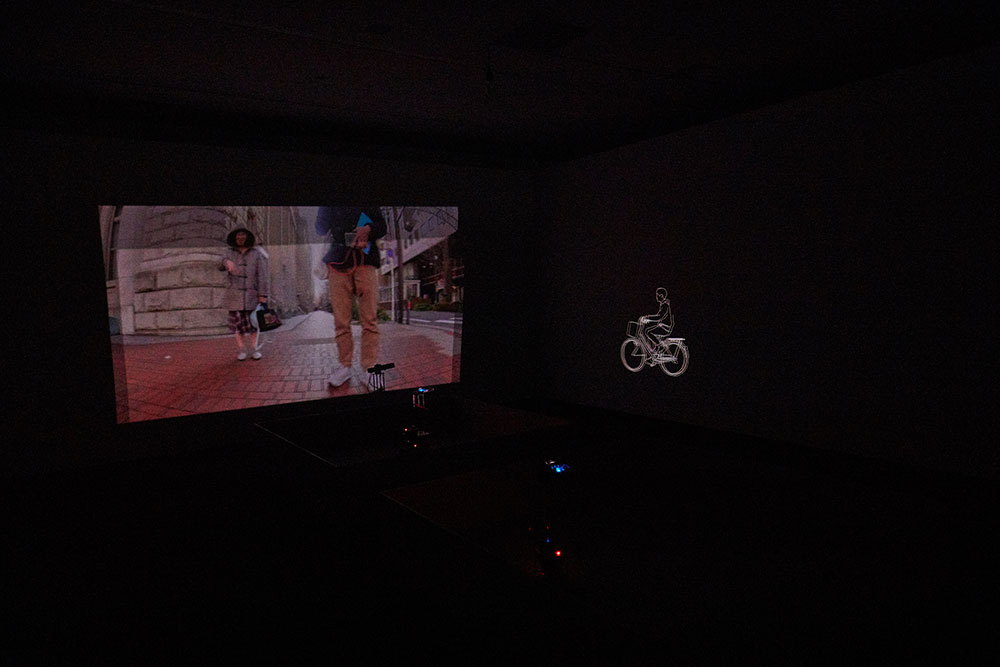 The reluming apparatus was screened in the 7th floor Conference Room Venus, in addition to its introduction on the first floor. In the darkness, images based on the artist’s personal memories are projected on the four walls.
The reluming apparatus was screened in the 7th floor Conference Room Venus, in addition to its introduction on the first floor. In the darkness, images based on the artist’s personal memories are projected on the four walls.
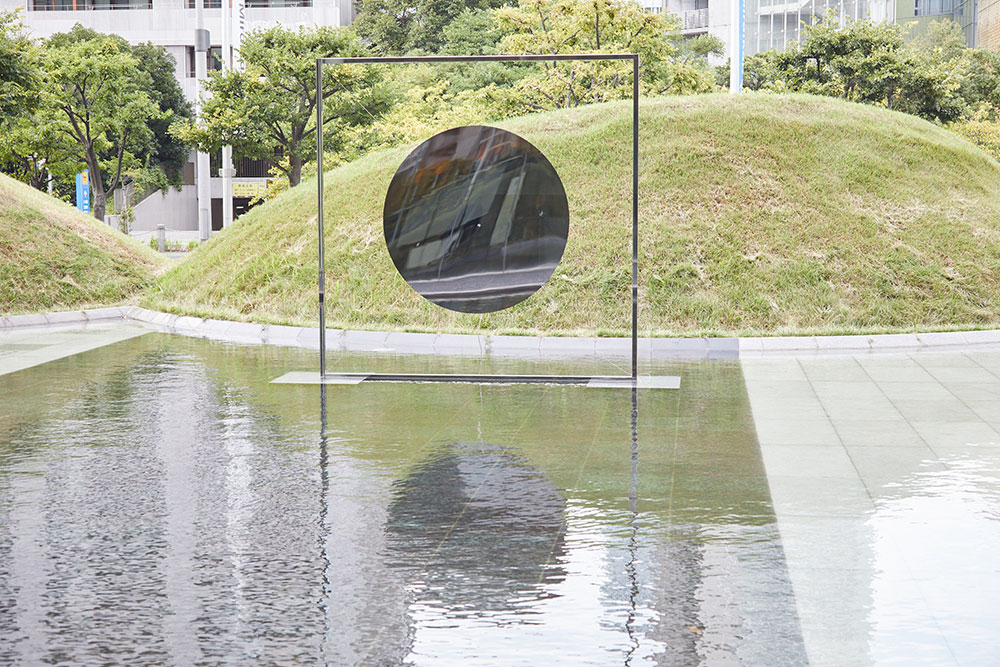 The outdoor Ether - liquid mirror was on display as an interactive work that measures the audience’s heartbeat and reflects it on the mirror. In the Special Exhibition Zone, a box-shaped work was displayed, and the heartbeats of past experiencers were heard as their mirrors vibrated.
The outdoor Ether - liquid mirror was on display as an interactive work that measures the audience’s heartbeat and reflects it on the mirror. In the Special Exhibition Zone, a box-shaped work was displayed, and the heartbeats of past experiencers were heard as their mirrors vibrated.
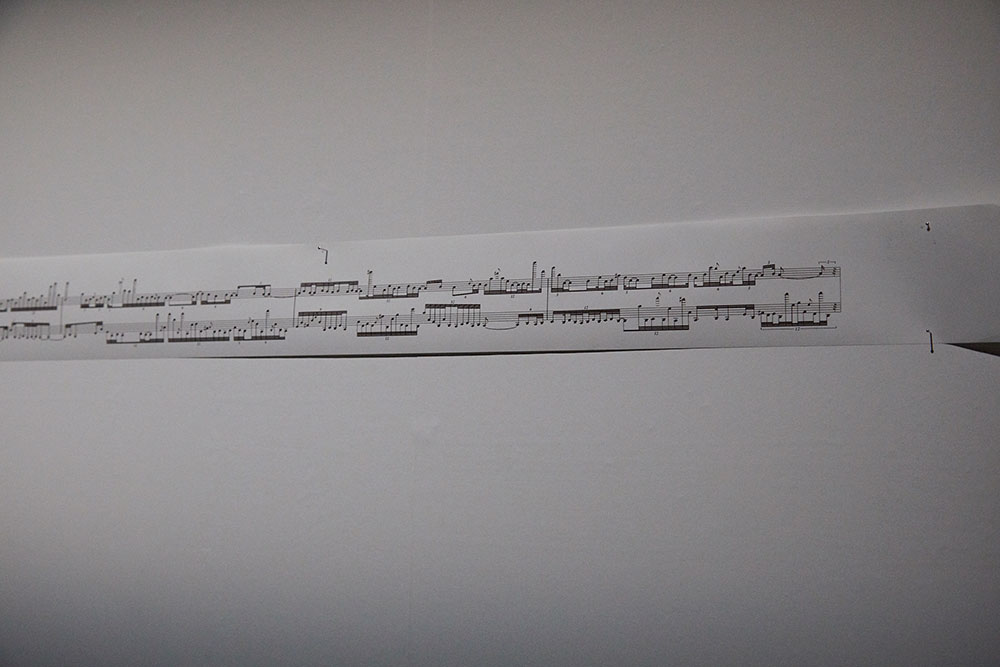 Sheet music transcribed from VOX-AUTOPOIESIS V -Mutual-. This work was also performed live during the exhibition period.
Sheet music transcribed from VOX-AUTOPOIESIS V -Mutual-. This work was also performed live during the exhibition period.
Entertainment Division covers a wide range of expression methods, from analog to the latest technology
In the Entertainment Division, IWASAWA Kenji’s ON-GAKU: OUR SOUND was awarded the Grand Prize. This is an animated feature film based on Ongaku to Manga (Music and Manga) by OHASHI Hiroyuki (Ota Publishing, 2009). The film depicts a group of delinquent students who form a band and spend their days playing music, using the rotoscoping technique of drawing based on live-action footage.
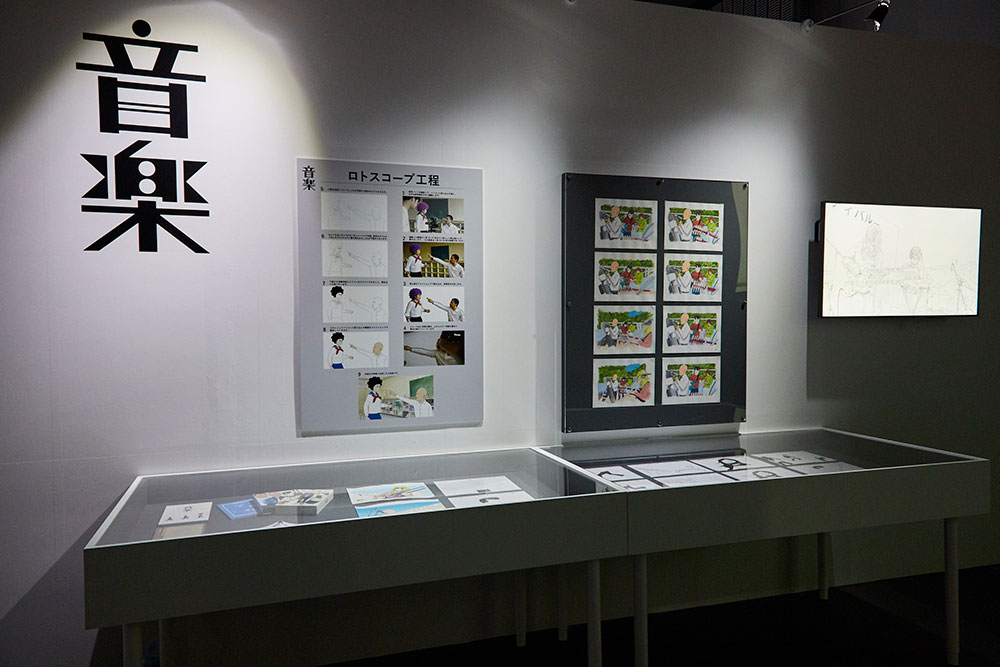 ON-GAKU: OUR SOUND took seven and a half years to create. For the scene in the film, they held an actual outdoor festival.
ON-GAKU: OUR SOUND took seven and a half years to create. For the scene in the film, they held an actual outdoor festival.
While ON-GAKU: OUR SOUND was created using analog methods, the work selected for the Excellence Award was created using technology. GEKIDAN NOMEETS (HIROYA Yuki, Representative) is a theater company formed in the wake of the new coronavirus pandemic that completes plays by full remote control. Replacements by Jonathan HAGARD / Nova Dewi SETIABUDI / Andreas HARTMANN / Dewi HAGARD / KIDA Kaori / Paul BOUCHARD presents Jakarta’s urban transition from the 1980s to 2020 in VR animation. RakugakiAR application by the “RakugakiAR” Production Team (SO Yoshihiro, Representative) allows users to scan illustrations and have them move on the screen and communicate with each other. KONDO Hiroshi’s 0107 - b moll is a work that stitches together images of trains running at night, setting them to minimalist music.
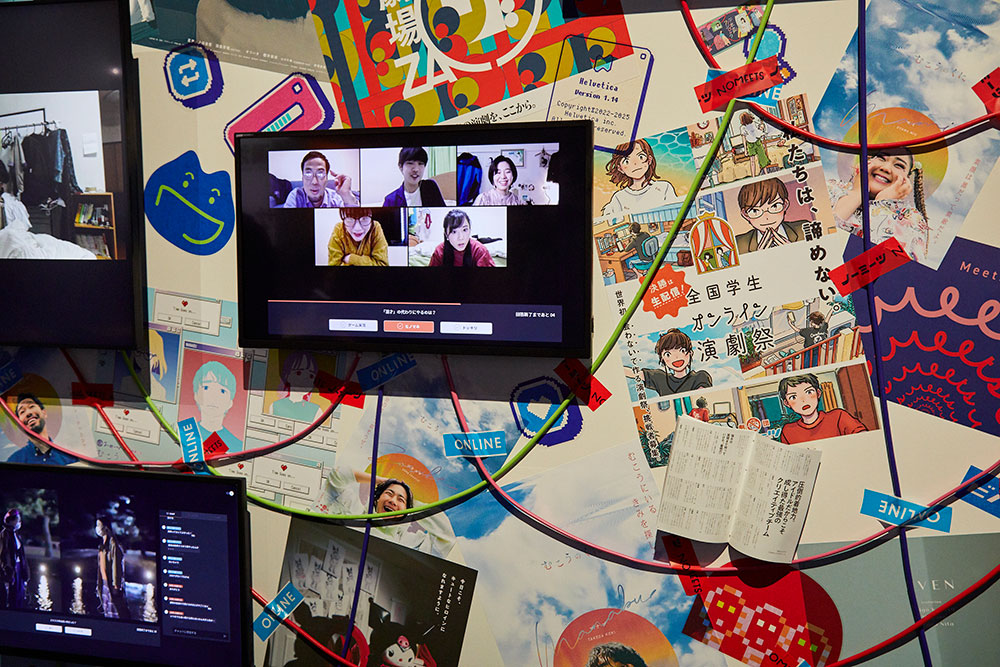 Past works were shown on multiple displays and posters covering the walls at the booth of GEKIDAN NOMEETS
Past works were shown on multiple displays and posters covering the walls at the booth of GEKIDAN NOMEETS
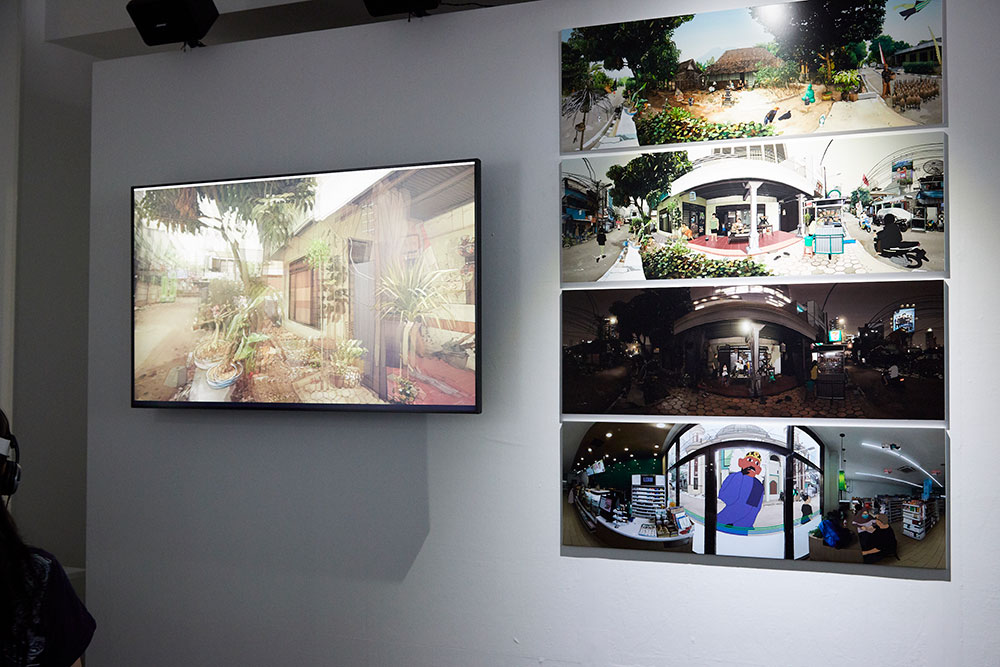 Audience members were able to watch the VR animation work Replacements with head-mounted displays in the 7th floor Conference Room Mercury.
Audience members were able to watch the VR animation work Replacements with head-mounted displays in the 7th floor Conference Room Mercury.
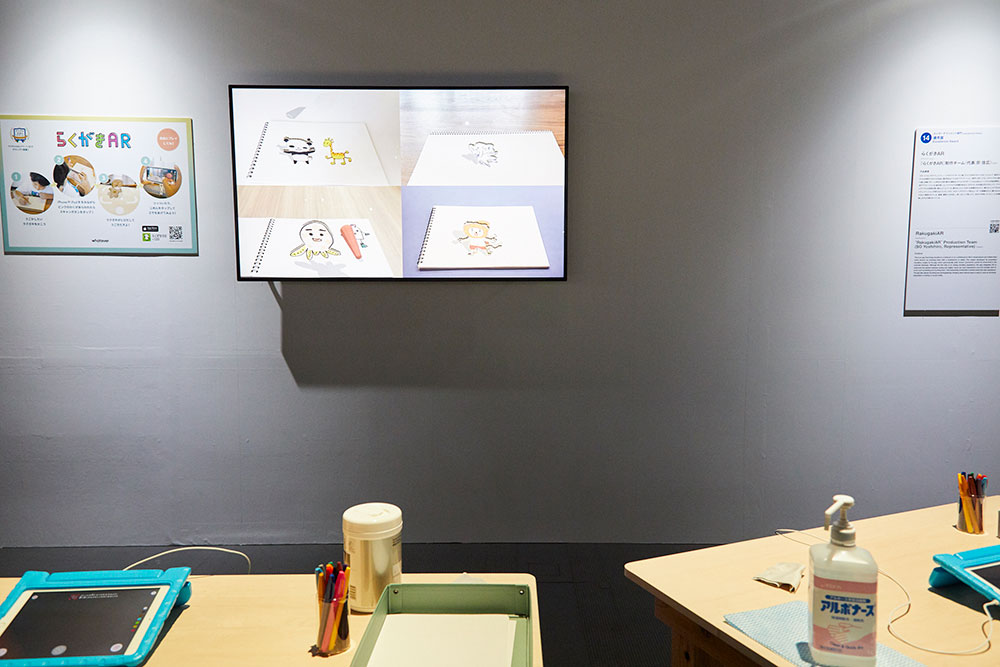 RakugakiAR could be experienced with a tablet device at the Special Exhibition Zone on the first floor.
RakugakiAR could be experienced with a tablet device at the Special Exhibition Zone on the first floor.
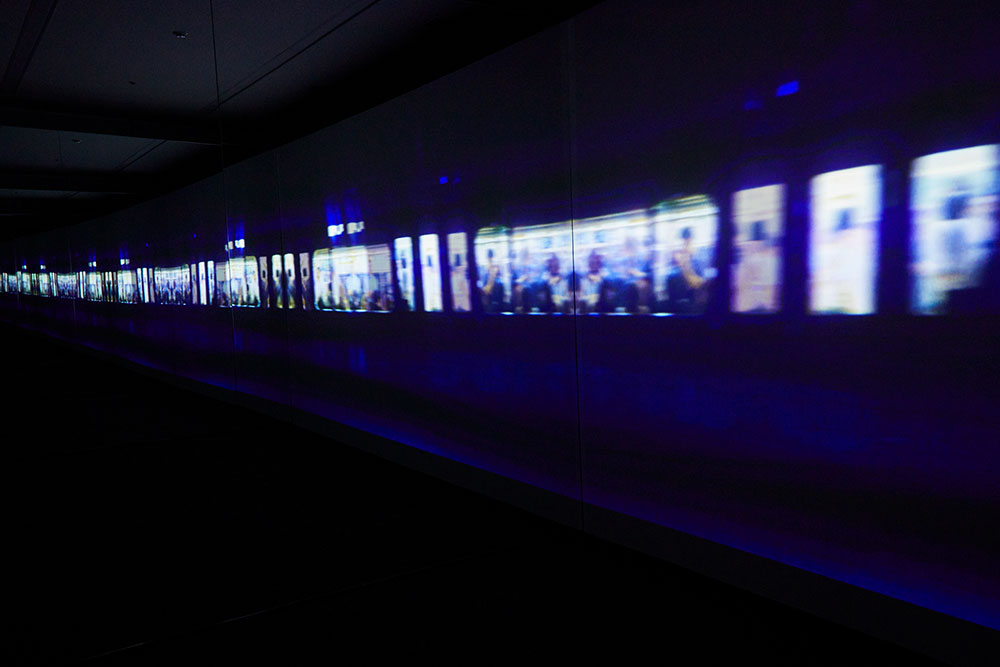 0107 - b moll exhibited in the 7th floor Conference Room Mars. Mirrors are laid out on both sides, giving the impression that the train goes on forever.
0107 - b moll exhibited in the 7th floor Conference Room Mars. Mirrors are laid out on both sides, giving the impression that the train goes on forever.
The Social Impact Award was given to AVATAR ROBOT CAFE by the “AVATAR ROBOT CAFE” Production Team (YOSHIFUJI Kentaro, Representative). This is a project in which disabled people and those who have difficulty going out of their homes serve customers (at a café restaurant) through OriHime, an alter-ego robot that can be operated easily by people with physical disabilities. This alter-ego robot café opened in Tokyo’s Otemachi for limited three weeks in October 2019. A permanent experimental venue opened in Nihonbashi (Tokyo) in 2021.
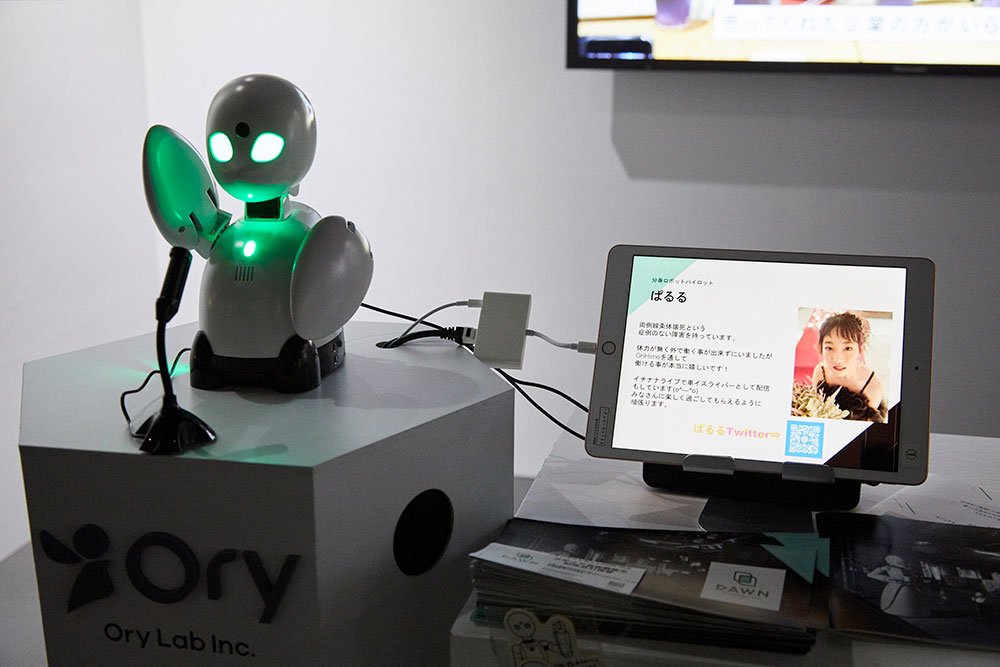 At the AVATAR ROBOT CAFE booth, visitors can communicate with a pilot who operates the OriHime alter-ego robot.
At the AVATAR ROBOT CAFE booth, visitors can communicate with a pilot who operates the OriHime alter-ego robot.
The winners of the New Face Award in the Entertainment Division were HAGA Naoto for his pixel art game, UNREAL LIFE; Naphtali FAULKNER’s Umurangi Generation, in which the story unfolds through the taking of photographs; and Canaria, a hand-drawn VR animation by YUHARA Kazuki. The work was created as a music video of the same title by TOKUMARU Shugo. Flight Fit VR, a fitness VR application by MORIYA Anju, won the U-18 Award. As in the previous year, this award was given to the only work in the Entertainment Division among the four divisions.
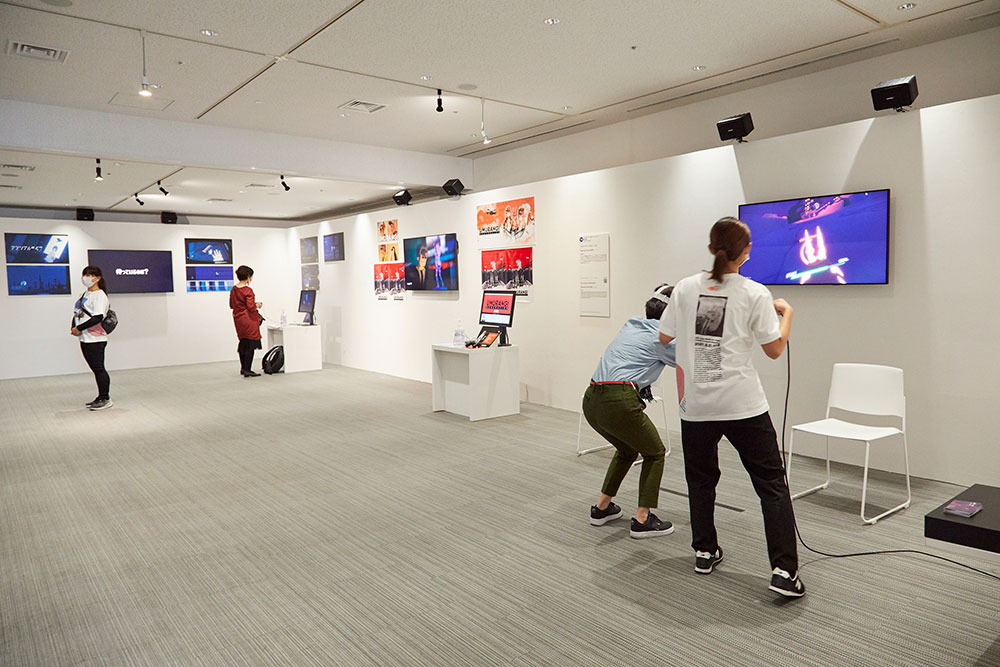 UNREAL LIFE, Umurangi Generation and Flight Fit VR can be played on the 7th floor.
UNREAL LIFE, Umurangi Generation and Flight Fit VR can be played on the 7th floor.
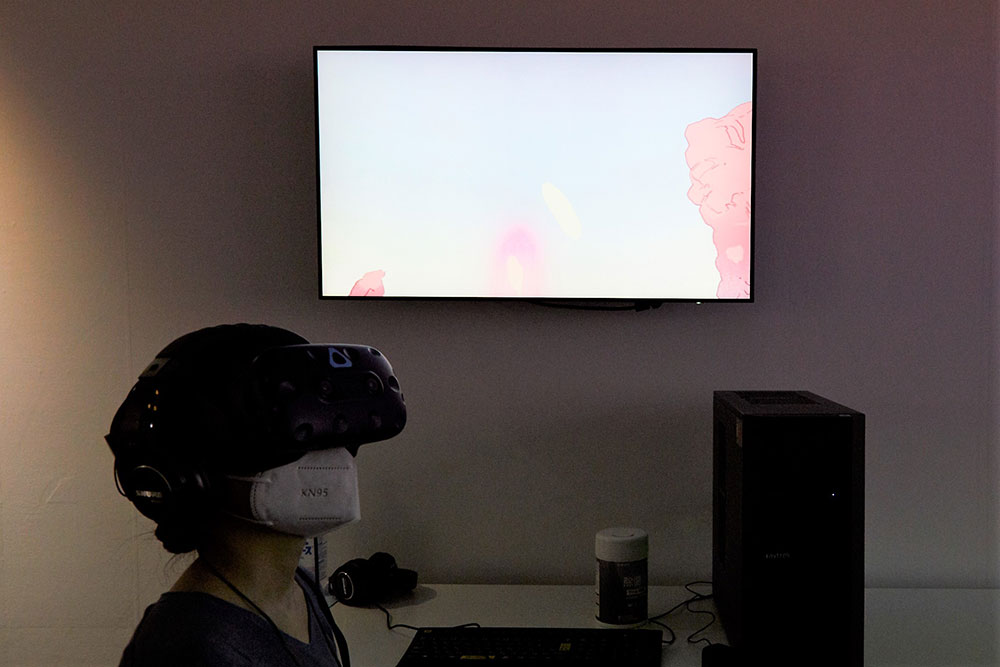 Canaria could also be viewed in VR in the 7th floor Conference Room Mercury like Replacements
Canaria could also be viewed in VR in the 7th floor Conference Room Mercury like Replacements
Grand Prize in Animation Division goes to 12-episode TV series
Following the Art and Entertainment divisions is the Animation Division. The Grand Prize winner was YUASA Masaaki’s Keep Your Hands Off Eizouken! an animated TV series. Based on the manga of the same title by OOWARA Sumito, the animation depicts the struggles of three high school girls who devote themselves to creating animation.
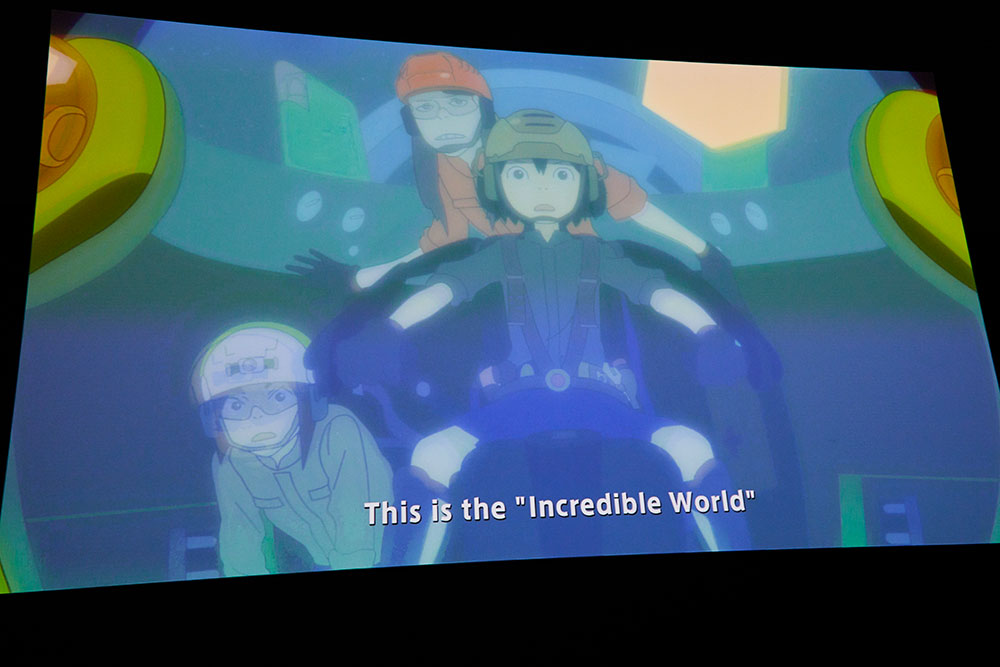 Reproductions of original drawings and setting materials, main visuals, and making-of videos were displayed along with screenings of the works at the exhibition venue.
Reproductions of original drawings and setting materials, main visuals, and making-of videos were displayed along with screenings of the works at the exhibition venue.
Of the four works selected for the Excellence Award, three were animated feature films. ISHIDATE Taichi’s Violet Evergarden: the Movie is a sequel to the TV anime series featuring Violet Evergarden, a girl with an artificial hand who works as a letter writer; A Whisker Away by SATO Junichi / SHIBAYAMA Tomotaka is a story about a junior high school boy and girl. Its key feature is how the girl uses a mask that can physically transform her appearance into a cat; MARONA’S FANTASTIC TALE by Anca DAMIAN is a story from the perspective of a dog who moves from one owner to another; and Grey to Green by Marcos SÁNCHEZ is a music video by Korean singer-songwriter Lydia LEE, featuring old-style images and animation overlaid with animation reminiscent of Disney films.
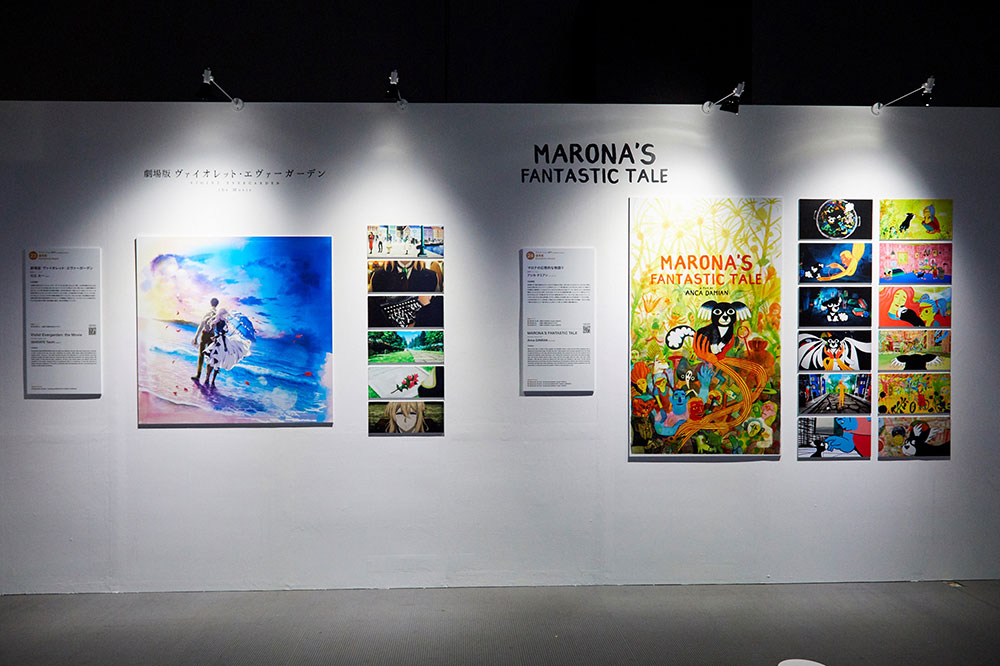 Exhibition space for Violet Evergarden: the Movie and MARONA’S FANTASTIC TALE. There were also panels showing clips from the film, in addition to the videos.
Exhibition space for Violet Evergarden: the Movie and MARONA’S FANTASTIC TALE. There were also panels showing clips from the film, in addition to the videos.
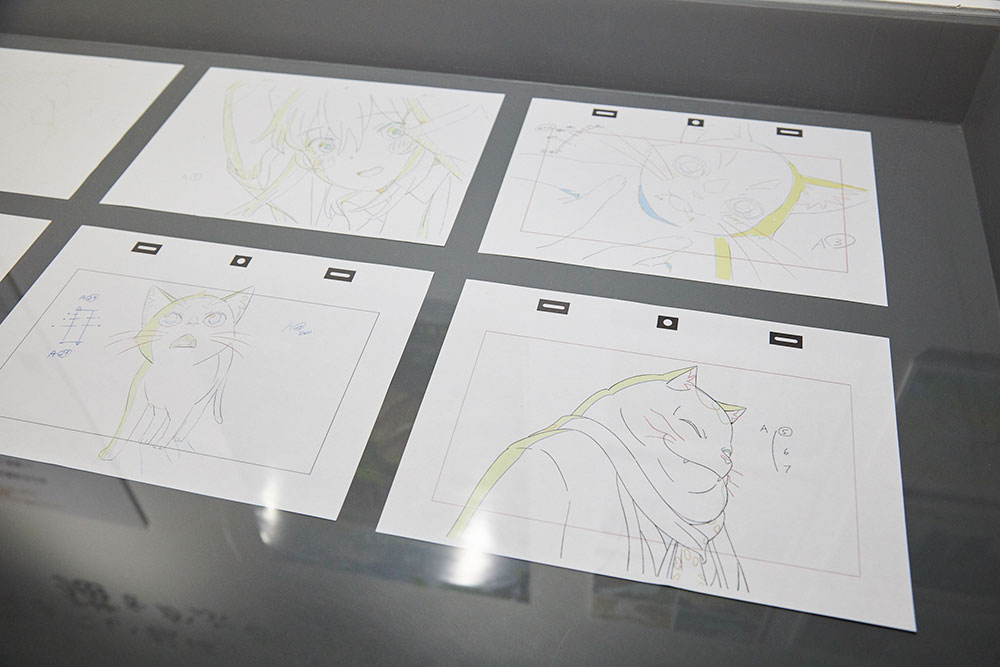 Reproduced original drawings from A Whisker Away
Reproduced original drawings from A Whisker Away
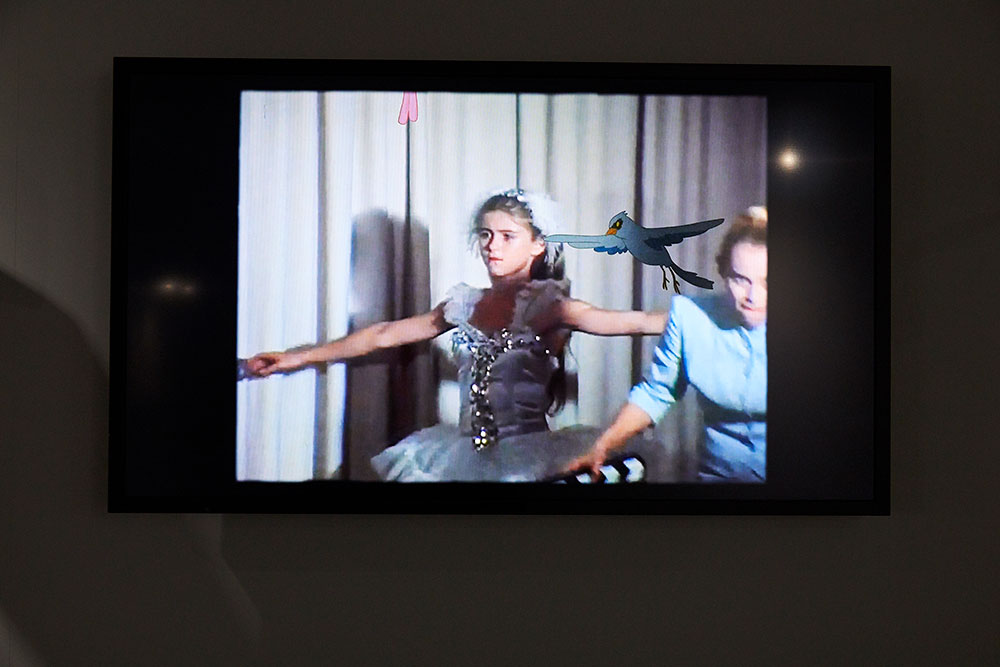 Installation view of Grey to Green
Installation view of Grey to Green
The winner of the Social Impact Award was the music video Haze Haseru Haterumade by the “music unit”–or musical collaboration–ZUTOMAYO. The music video, directed by Waboku, depicts a young girl who leaves her hometown to wander the universe. The scenes change one after another in time with the sound.
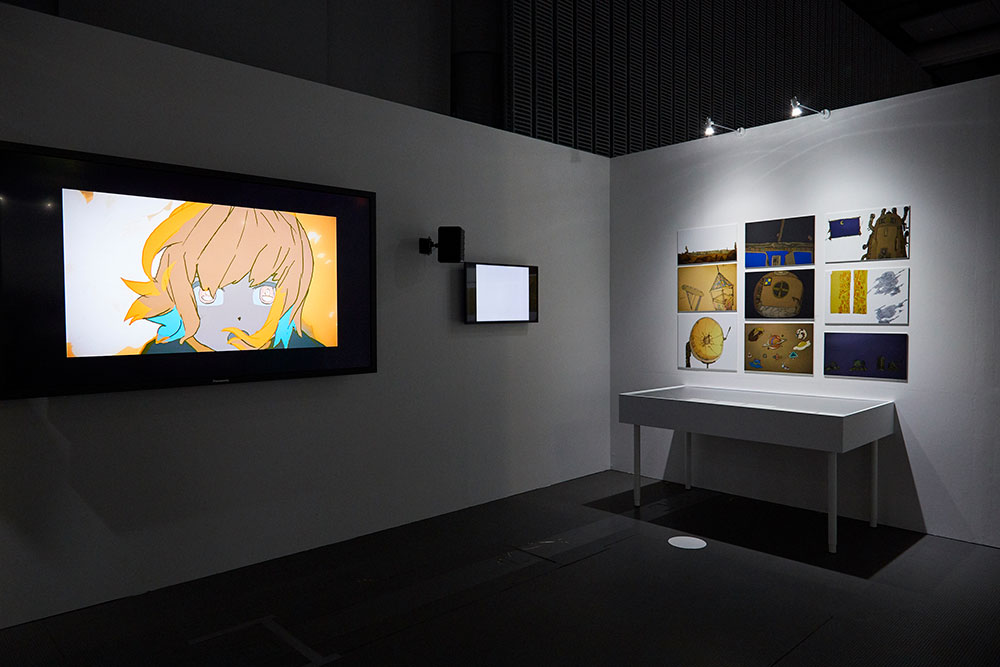 Haze Haseru Haterumade features videos, panels and production materials for its booth display.
Haze Haseru Haterumade features videos, panels and production materials for its booth display.
The New Face Award was given to three animated short films. The Man on the Shore by MORISHIGE Hikaru / OZASA Daisuke researches fictional creatures on an island, realistically depicted in 3DCG using a video game engine; The mark of Emi by FURUKAWAHARA Momoka visualizes personal memories of adolescence related to sex through rough pencil drawings; and Héloïse FERLAY’s stop-motion animation, À la mer poussière, which uses felt puppets to depict the tense relationship between a mother and her two children.
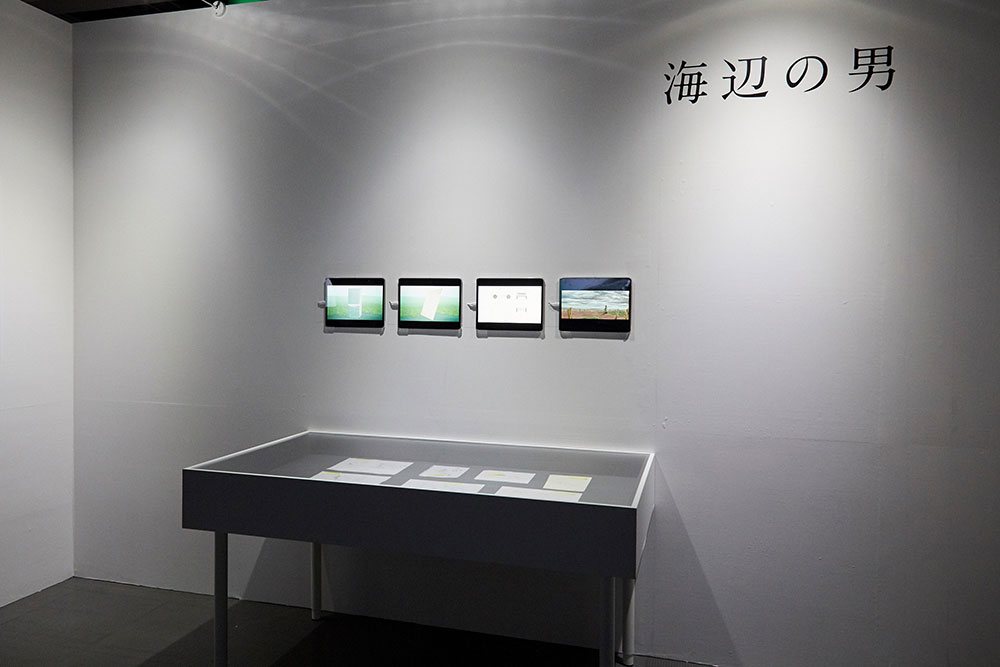 The Man on the Shore’s production process was introduced its via four tablets, in addition to screening on monitors.
The Man on the Shore’s production process was introduced its via four tablets, in addition to screening on monitors.
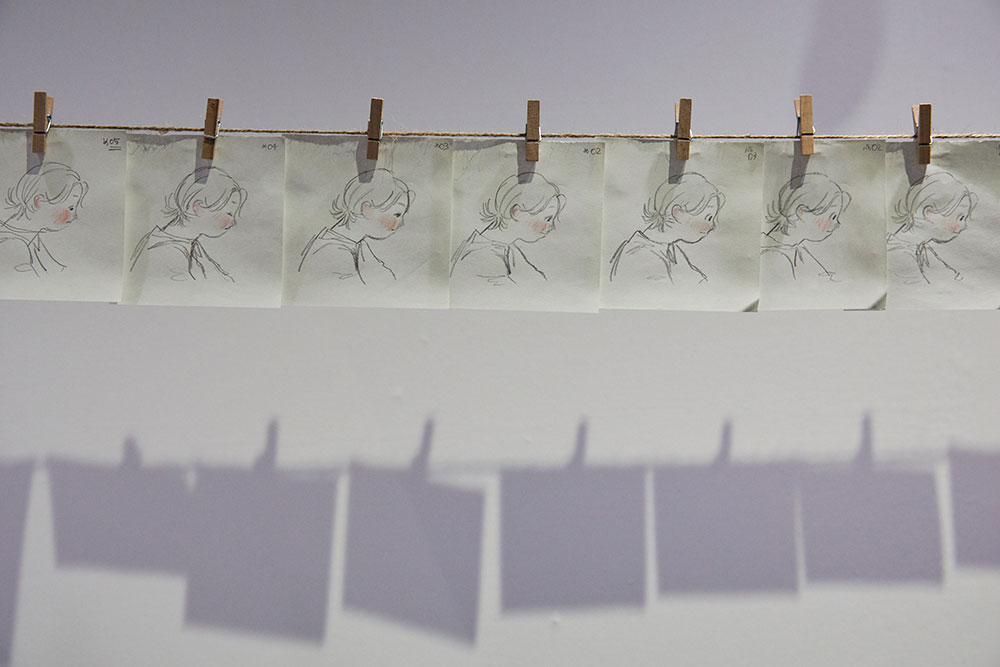 The mark of Emi’s original drawings on 10x10cm paper were on display.
The mark of Emi’s original drawings on 10x10cm paper were on display.
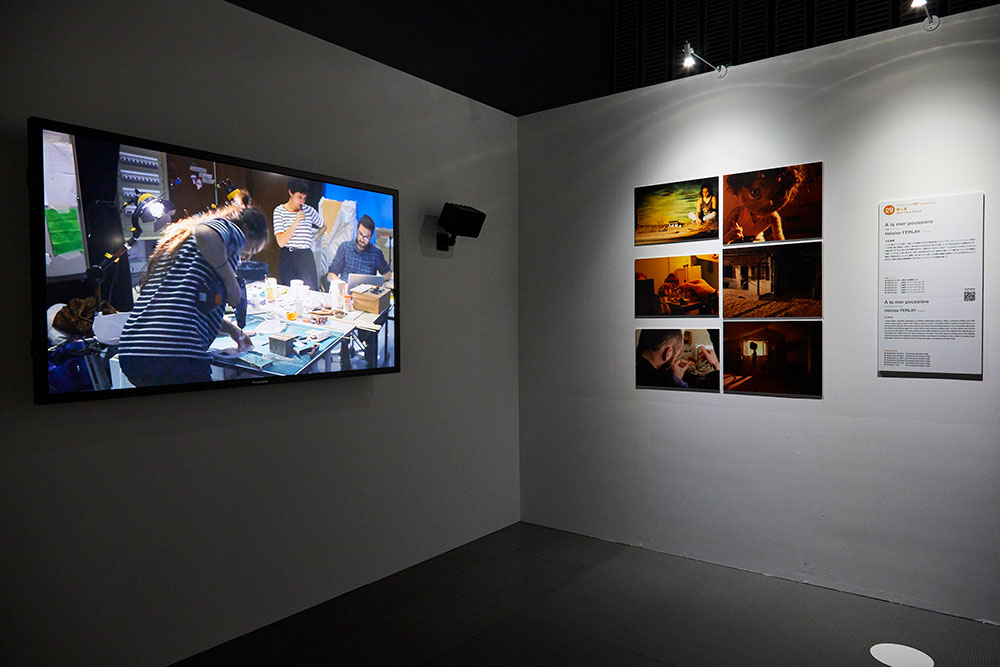 A video recording of the production process using puppets was also introduced for À la mer poussière
A video recording of the production process using puppets was also introduced for À la mer poussière
The award-winning films in the Animation and Entertainment divisions, as well as the films under the Jury Selections, were screened at the Innovation Hall and Miraikan Hall of the Miraikan, and at the satellite venues of CINEMA Chupki TABATA and Ikebukuro HUMAX Cinemas.
Many works in Manga Division are set in contemporary society
Last in line in the Special Exhibition Zone were works from the Manga Division. The Grand Prize winner, UMINO Chika’s March comes in like a lion, centers on a professional shogi player who is a high schooler living in downtown Tokyo. The story depicts various human events such as his relationship with three sisters who lost their mother and his matches against rival players.
The Excellence Award went to four works. SAKAMOTO Shin-ichi’s Innocent Rouge beautifully depicts the way of life of a brother and sister born into a family of executioners during the French Revolution; a young couple awaiting the birth of their first child confronts the situation of children in the world after the attack on Malala YOUSAFZAI in Kashikokute yukiaru kodomo (A Wise and Brave Child) by YAMAMOTO Miki; HITORIDESHINITAI (I Want to Die Alone) by CURRYZAWA Kaoru is a comedy. A single woman who works as a curator ponders life and death after the lonely passing of her aunt; Hei no naka no biyoshitsu (The Depth of the Sky) by KOHINATA Marco depicts today’s women in the story set in a beauty parlor where inmates from a women’s prison cut the hair of regular customers. Its original author is SAKURAI Mina. Works that focused on today’s social issues and events stood out.
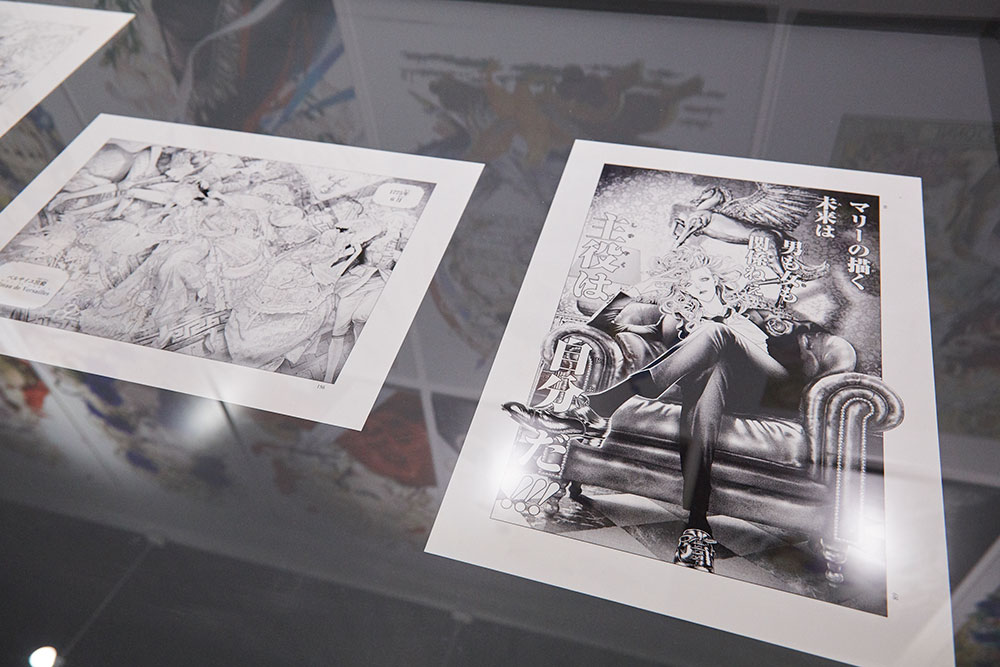 Delicate expressions were created by a digital drawing for Innocent Rouge.
Delicate expressions were created by a digital drawing for Innocent Rouge.
 Kashikokute yukiaru kodomo (A Wise and Brave Child) displays original color drawings and materials for paintings used by the artist.
Kashikokute yukiaru kodomo (A Wise and Brave Child) displays original color drawings and materials for paintings used by the artist.
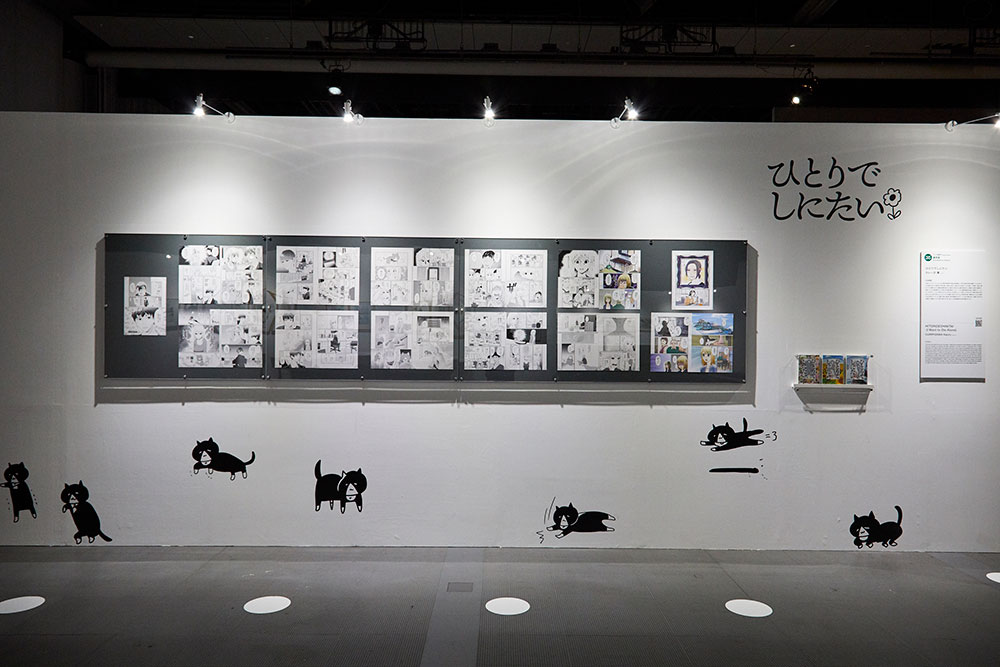 HITORIDESHINITAI (I Want to Die Alone) is a work done by digital drawing.Themes such as loneliness, marriage, and postretirement are depicted with laughter.
HITORIDESHINITAI (I Want to Die Alone) is a work done by digital drawing.Themes such as loneliness, marriage, and postretirement are depicted with laughter.
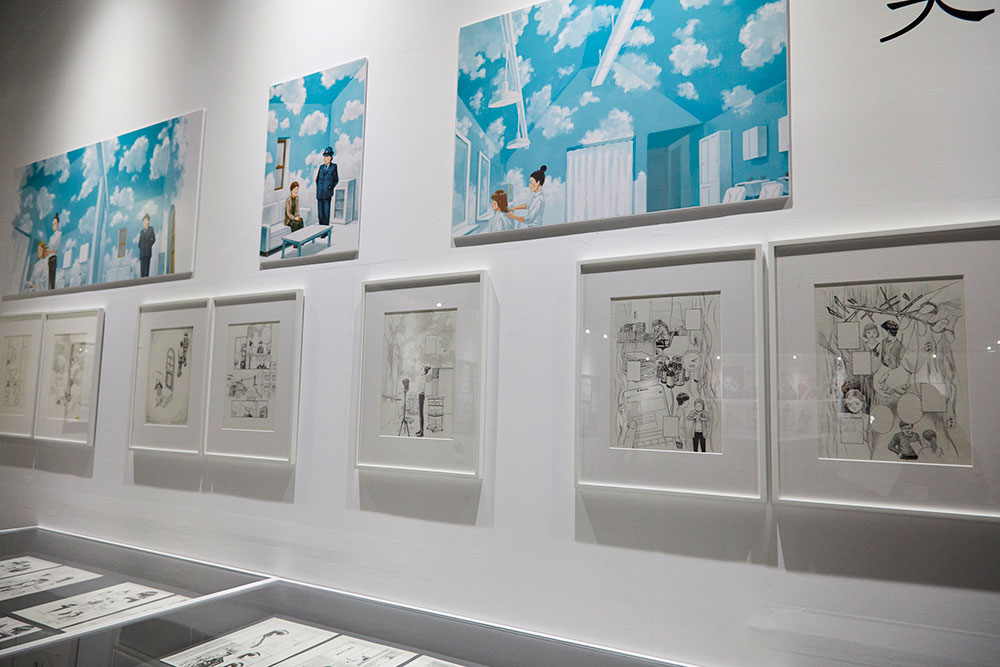 Hei no naka no biyoshitsu (The Depth of the Sky) presents original paintings with detailed handwriting.
Hei no naka no biyoshitsu (The Depth of the Sky) presents original paintings with detailed handwriting.
The winner of the Social Impact Award was NODA Satoru’s GOLDEN KAMUY. This is an adventure story about a military veteran and an Ainu girl in search of gold bars said to have been hidden by the Ainu people. It has drawn many readers into the story by incorporating Ainu culture and comedic elements.
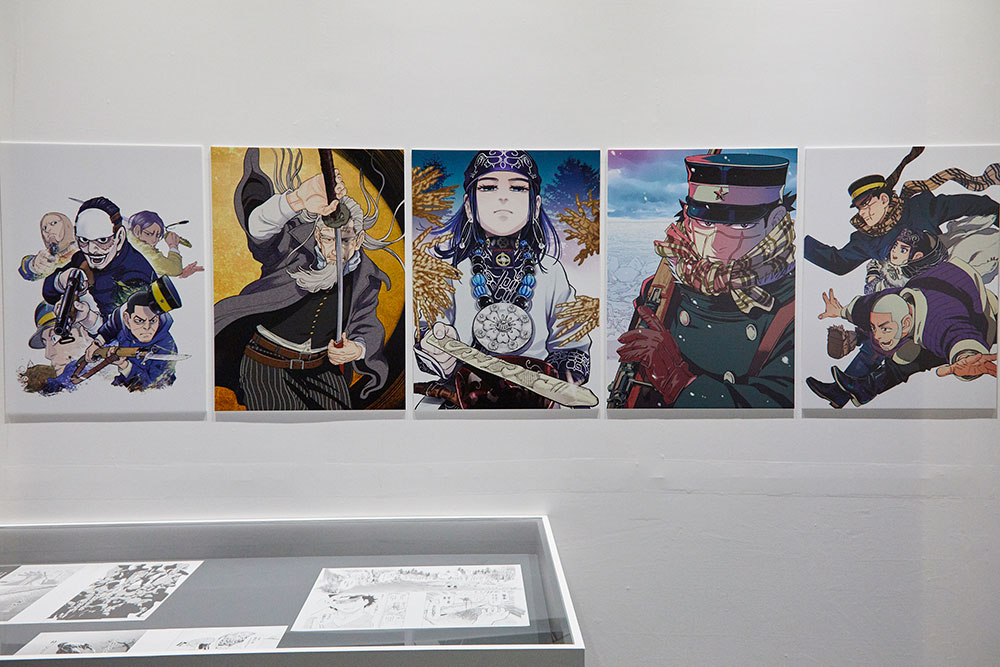 Color panels, including cover illustration of GOLDEN KAMUY, are eye-catching.
Color panels, including cover illustration of GOLDEN KAMUY, are eye-catching.
The New Face Award went to three works: Swingin’ Dragon Tiger Boogie, a music manga by HAIDA Koukou featuring a girl who enters the world of entertainment in postwar Japan; SORATOBU KUJIRA (A Flying Whale): SUZUKI, Suzuhiro Works, a collection of six short stories by Suzuki, depicting subtleties that arise in human relationships; and My Broken Mariko by HIRAKO Waka, whose protagonist takes bold action to steal the ashes of her close friend, Mariko, from her parents’ home. Mariko had committed suicide after being abused by her parents.
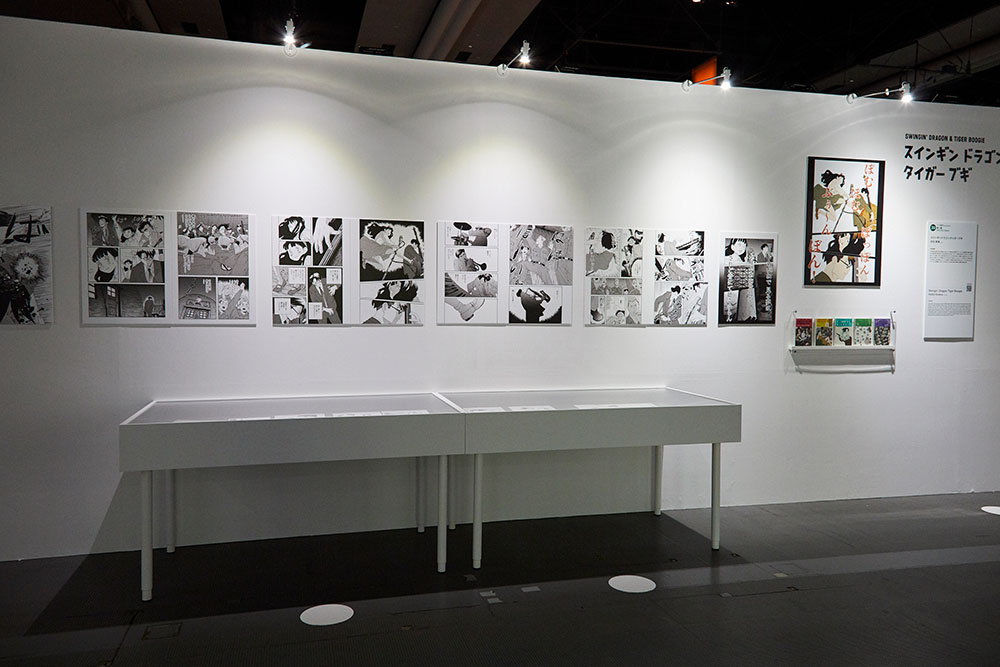 Swingin’ Dragon Tiger Boogie displays its panels, original drawings and materials.
Swingin’ Dragon Tiger Boogie displays its panels, original drawings and materials.
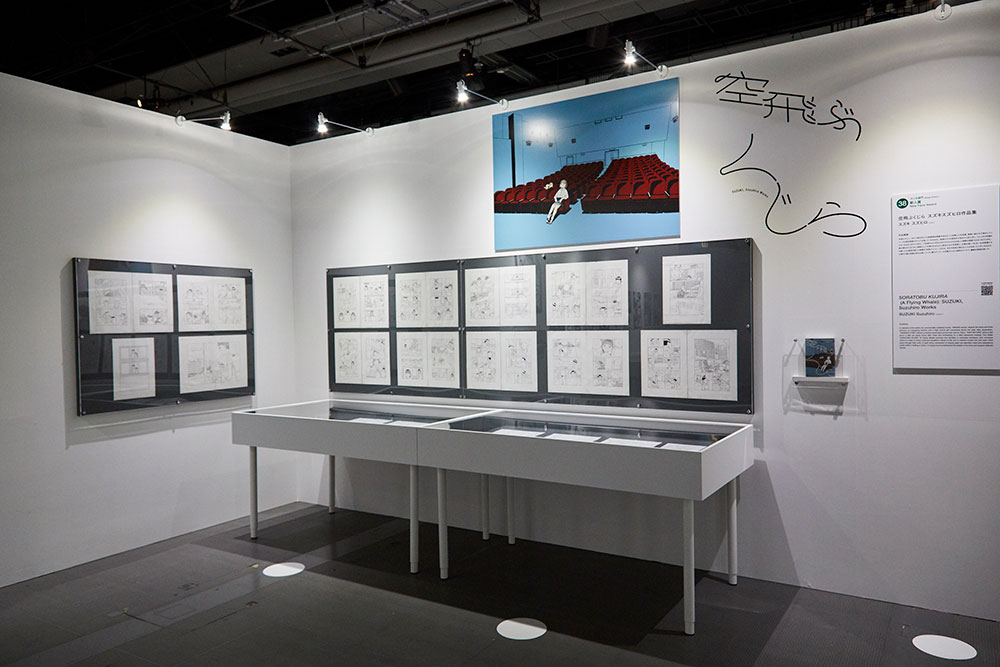 SORATOBU KUJIRA (A Flying Whale): SUZUKI, Suzuhiro Works’ original drawings indicate a production method that uses both analog and digital techniques.
SORATOBU KUJIRA (A Flying Whale): SUZUKI, Suzuhiro Works’ original drawings indicate a production method that uses both analog and digital techniques.
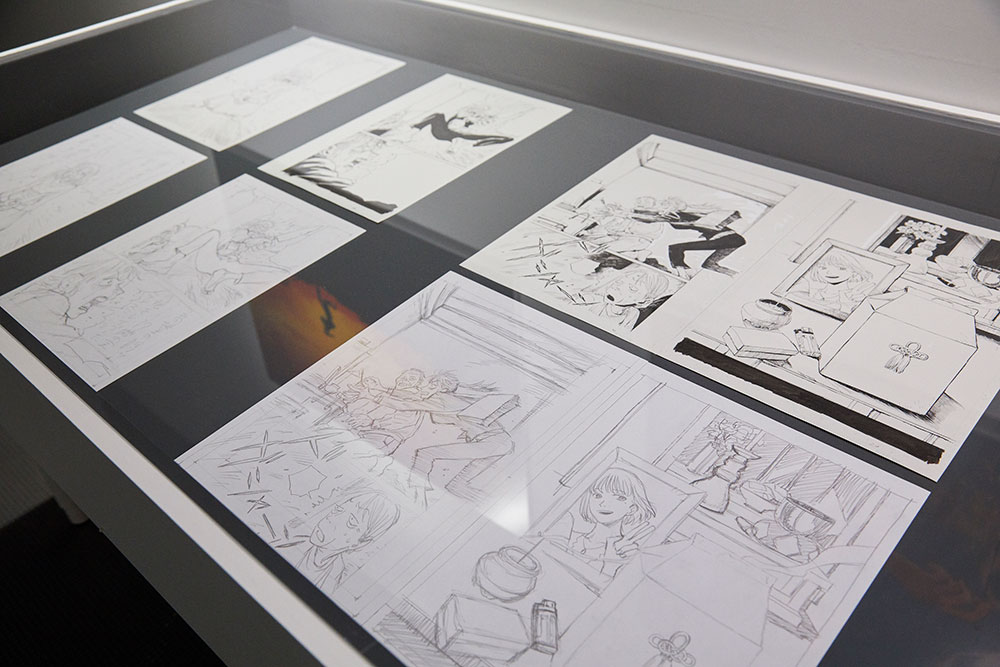 Viewers can enjoy comparing original drawings and names at the display of My Broken Mariko.
Viewers can enjoy comparing original drawings and names at the display of My Broken Mariko.
The above winning works of the Manga Division and Jury Selections were placed at the Manga Library in the 7th floor Conference Room Jupiter. Visitors were able to pick up books and browse through them.
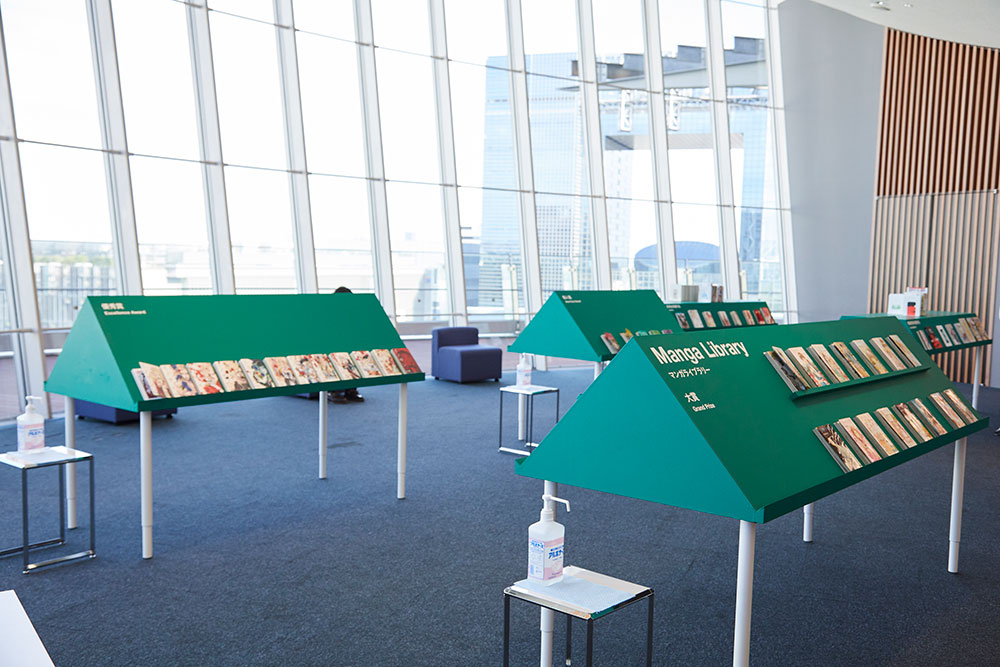 A scene from the Manga Library. Award-winning works and those of Jury Selections are displayed.
A scene from the Manga Library. Award-winning works and those of Jury Selections are displayed.
Chigiri-e x Stop-motion Animation and 3DCG, the two works contrasting in their production methods win the Festival Platform Award
The Festival Platform Award is set for works that utilize facilities in the Miraikan. The award’s Geo-Cosmos Category went to AKIYAMA Tomoya’s video work, Chigiru, in which the Earth is torn apart and then put back together again like a chigiri-e picture. The Dome Theater Category award went to L’alter-Monde by Sandrine DEUMIER / Myriam BLEAU. This is a 3DCG audiovisual work on the theme of humans and rediscovered nature.
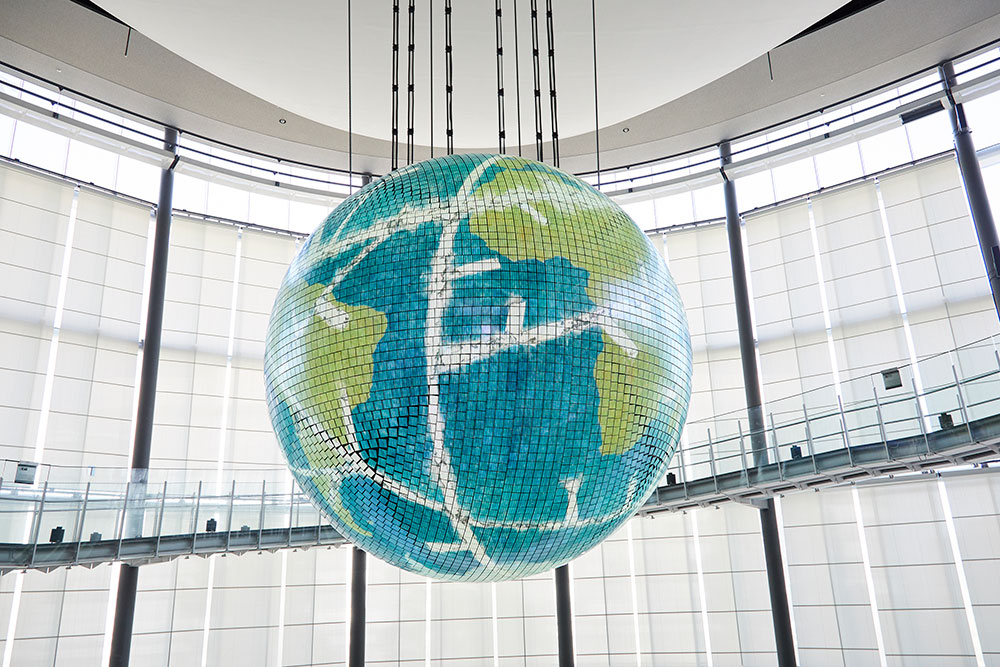 Chigiru was created with a stop-motion animation method.
Chigiru was created with a stop-motion animation method.
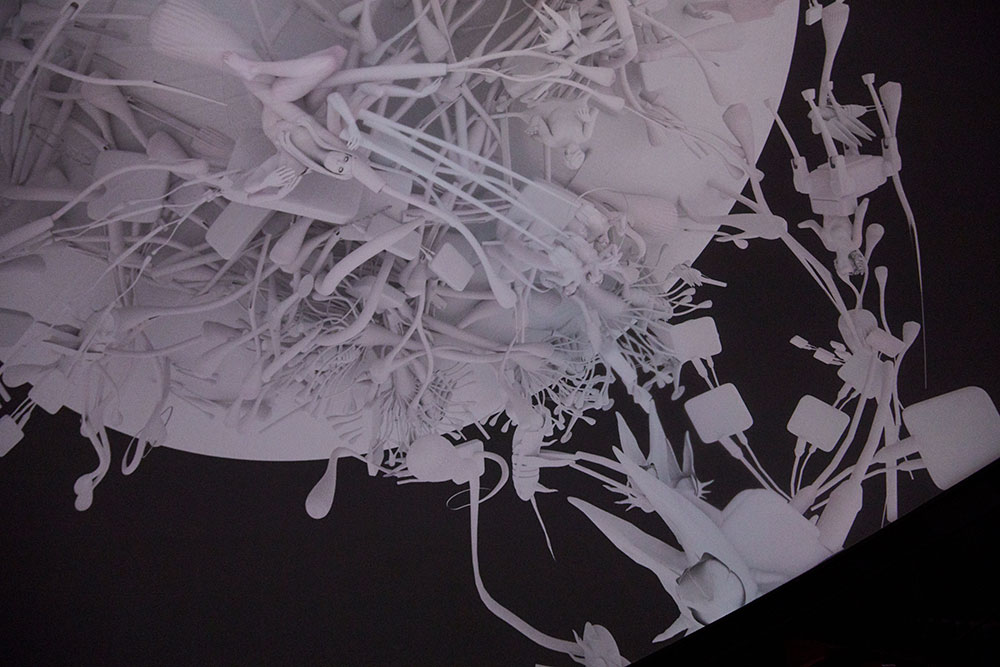 L’alter-Monde, an immersive audiovisual project for a full-dome format
L’alter-Monde, an immersive audiovisual project for a full-dome format
Special Achievement Award presented in recognition of achievements in each category
The four recipients of the Special Achievement Award were introduced in each awardee’s booth in the Special Exhibition Zone. The Art Division went to KUSAHARA Machiko, Media Art and Media Archaeology Researcher / Curator. The Entertainment Division was given to SAKUMA Akira, Game Creator. NOZAWA Masako, Voice Actor, took the Animation Division. And the Manga Division went to SAKATA Fumihiko, Representative of the Gataket Secretariat.
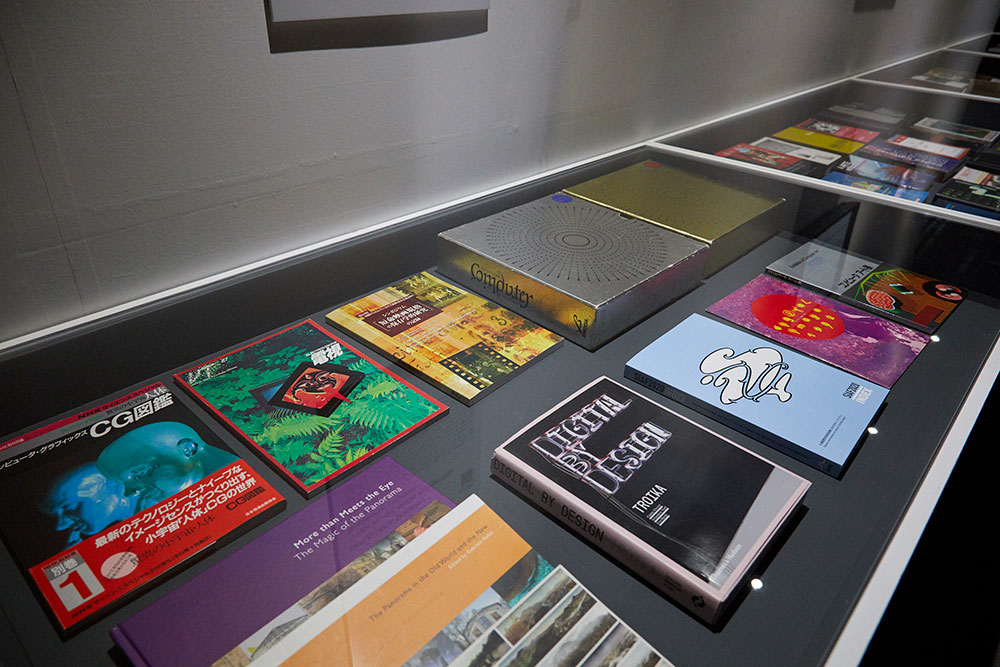 In the space for Special Achievement Award recipients, related materials were displayed in accordance with their achievements. KUSAHARA Machiko’s glass showcase is lined with exhibition catalogs, papers and other writings she produced over the years.
In the space for Special Achievement Award recipients, related materials were displayed in accordance with their achievements. KUSAHARA Machiko’s glass showcase is lined with exhibition catalogs, papers and other writings she produced over the years.
 The history of Gataket, represented by SAKATA Fumihiko, was summarized in panels.
The history of Gataket, represented by SAKATA Fumihiko, was summarized in panels.
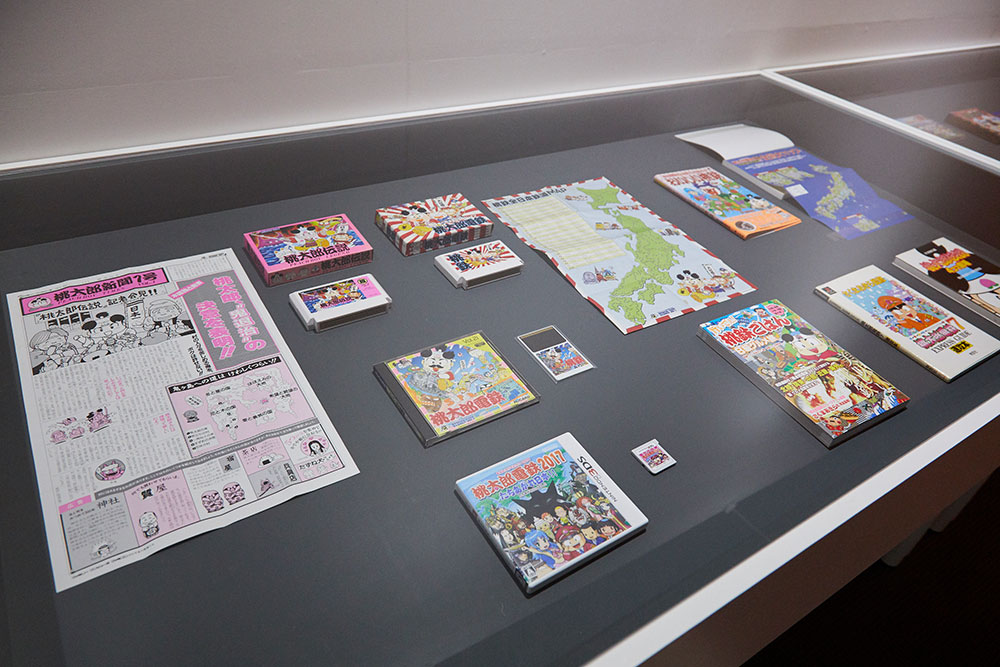 Packages and books of games created by SAKUMA Akira
Packages and books of games created by SAKUMA Akira
Support for creators and related projects for promotion of media arts
The activities of creators in Japan with winning works or who were chosen for Jury Selections in the Japan Media Arts Festival are supported. Among creators receiving support, the following five works were exhibited in the 7th floor Conference Room Uranus: YAMADA Teppei’s Visualizing Heartbeat with Diversity and Universality as the Theme, MAKINO Takashi’s Echoed, ONISHI Takuto’s When the drone comes, the wind blows, ISHIKAWA Masaya’s Layers of Light, and Team Yuri Suzuki at Pentagram (SUZUKI Yuri, Representative)’s Music for Dyslexics: Synesthesia Toy Colour Chaser Mass Production Project.
Near the above-mentioned Manga Library, panels and other information were presented on projects related to the Agency for Cultural Affairs, such as the Project for Overseas Development of Media Arts and the Project to Improve Networking and Archival Infrastructure of Media Arts.
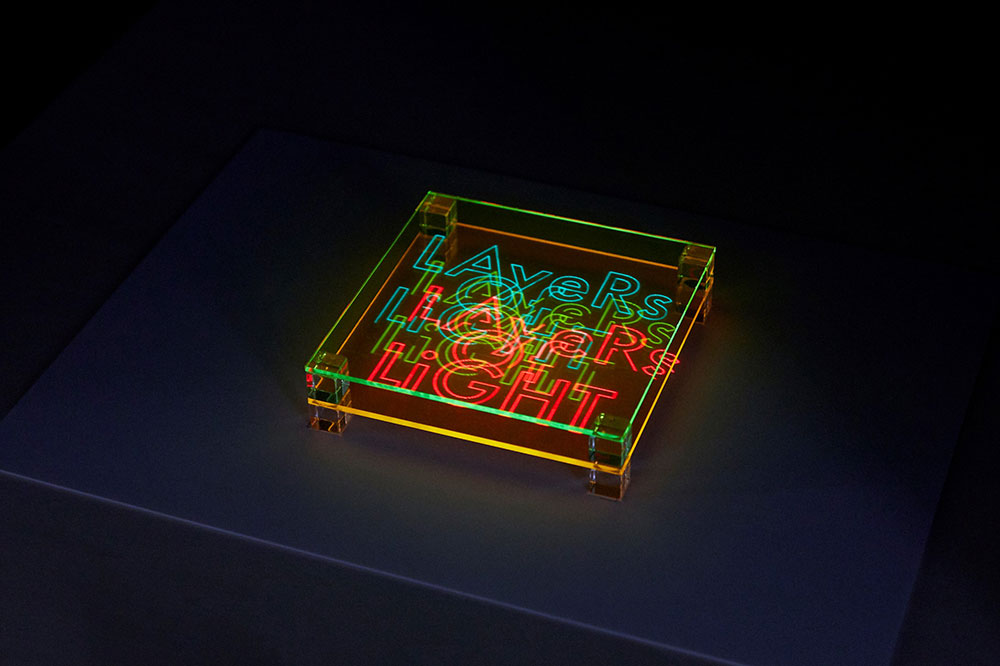 Layers of Light is a video display device with a unique three-dimensional effect.
Layers of Light is a video display device with a unique three-dimensional effect.
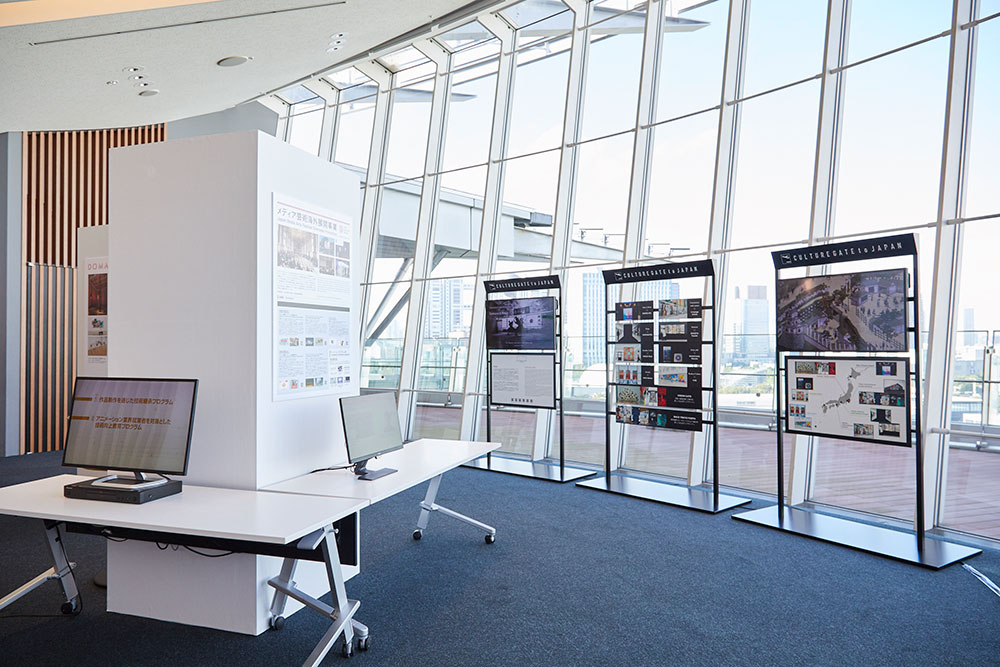 Related Projects of Japan Media Arts Festival
Related Projects of Japan Media Arts Festival
As a countermeasure to the novel coronavirus, the Award-winning Works Exhibition was open to the public by advance reservation. Visitors were asked to take their temperatures and disinfect their hands at the entrance. Although the number of participants was limited, workshops and talk sessions were held during the exhibition period. Archived videos of the talk sessions are available on the special website for a limited time (until 5:00 p.m. on Friday, December 24, 2021).
(information)
24th Japan Media Arts Festival
Exhibition of Award-winning Works
Dates: Thursday, September 23–Sunday, October 3, 2021
Hours: 10:00–17:00
Venues: Miraikan–The National Museum of Emerging Science and Innovation, and others
Admission: Free *Advance reservation required
Organizer: 24th Japan Media Arts Festival Executive Committee
https://j-mediaarts.jp/en/
*The e-book of the 24th Japan Media Arts Festival Award-winning Works can be browse via the link [Catalog] on the above website. It contains outlines of 24 Years of the Japan Media Arts Festival including the award-winning and jury selection works and reasons for the awards, a list of award-winning works and the jury’s comments. Printed versions are available for purchase in Japan.
*URL links were confirmed on November 1, 2021.
あわせて読みたい記事
- Report on the 23rd Japan Media Arts Festival Cross-Division Talk“The Distance Between Creative Expression and Society”2021年9月14日 更新
- Report on the 22nd Japan Media Arts Festival Exhibition of Award-winning Works (Part 1): The Exhibition at Miraikan-The National Museum of Emerging Science and Innovation2020年9月18日 更新
- Report on the 22nd Japan Media Arts Festival Exhibition of Award-winning Works (Part 2): The Exhibition at Fuji Television Wangan Studio2020年9月18日 更新











